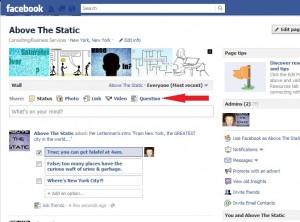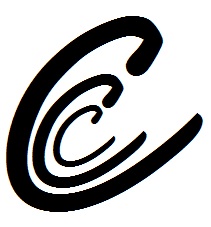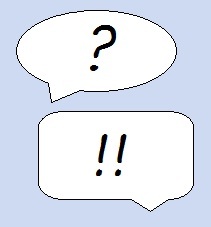 In the last few years, Facebook has emerged as the undisputed king of the social networks.
In the last few years, Facebook has emerged as the undisputed king of the social networks.
Several other platforms hold their own in a niche battle but, as Zuckerberg’s baby nears 1 billion global users and over 1/3 of the US population signed up, it’s almost impossible to ignore Facebook if you want to reach your fans online.
What becomes the burning question for you artists, regardless of size, genre, or location, is how to connect with those fans and keep them interested in the contents of your Facebook fan page.
The Burden of Growth
Unfortunately, as Facebook’s user count has grown, so has the number of groups trying to get their message in front of ever-wearying fans. To rise above the static noise of this Facebook update deluge, you need to vary your content, encourage fan likes and comments, and keep your posts engaging enough to continue attracting attention.
“Yes, yes, yes, we know all this…”, I hear you chorus, “But how?”
Well that’s exactly why I probed some of the smarter and socially savvy artistic folks I know – in addition to the depths of my own experience – to bring you these 25 tips for creative Facebook fan page content:
1. Ask fans to comment with their favorite artist, song, genre, or anything that you believe will fire their passions to contribute. You learn about your fan base, as well as gaining traction in their News Feed from their participation.
2. Auction or sell one-off items in the comments section of a post, with the image of what’s up for sale. This real-time selling can create visible demand and prompt further interest in your future posts or other sale items, as fans watch more closely for these specials.
3. “A big thing is cross promotion. For example, the Foo Fighters have a FB page and I cover Everlong in a video. So I can tag and say, “Hey, check out my @FooFighters cover” and it will show up on my page and theirs, increasing clicks and impressions.” ~ Khaled Dajani (NYC singer-songwriter)
4. Produce a few different versions of cover art for your next release. Post each separately to a Facebook album and ask fans to pick the art work that you’ll use by most liked/voted for piece.
5. Be timely in responses. You need not be on 24/7, but the sooner you can respond to developing conversations on your page, the better the discussion and closer your fans will feel. Plugging in via mobile devices and getting into the habit of checking in a few times through the day will help your engagement levels no end.
6. Hand over control of your Facebook page to one or some of your most passionate fans for a set period, perhaps a few days to a week. Give them room to express their musical and artistic interests, as far as is appropriate for your page.
7. “Let fans vote on new song choices or additions to your set list.” ~ Karlton Utter of The Hazmats
8. Ask for fan stories from your shows that they’ve attended. Many will be happy to share; you’ll remind them of a great time associated with your music and you’ll get more testimonials/comments encouraging those who haven’t yet seen you to catch that next gig.
9. Check your Insights. Your fan page has the ‘Admin Panel’, which offers a look at your most popular posts by date, time, type of content, and much more. Check these every week to see what your fans are reacting well to and what you need to dump.
10. Let another band or artist run your page as administrator for a few days to a week. Give them access to your audience and they’ll likely reciprocate by bringing some of their friends and followers to your page. It will also freshen up content and allow you to see how fans react to the change.
11. “Use your new show or project poster/art as your profile pic. For your fans, it’s an easy visual reminder of what you’re working on and keeps your visual message fresh.” ~ Alejandra O’Leary (Michigan singer-songwriter)
12. Run ongoing competitions that encourage multiple clicks and comments, such as entries to sweepstakes drawings or picture posting/voting contests. Each interaction gives the fan a greater chance to win and gives you a greater number of connections to these fans.

13. Expanding on number 1, make use of the Facebook ‘Question’ function (pictured left). This gives you instant poll-taking on your page and in the fan news feeds, providing an easy opportunity to encourage one click feedback. Questions on topical subjects, favorite artists, or those that give your fans a choice in your creative process are all great ways for you to increase interactions.
14. Post non-profit or cause related content that aligns with your personality and/or music subject matter. People like and share good causes more readily, helping both the message and your page to spread.
15. Make Facebook content feel like bonus material. Share things there that you don’t post elsewhere, including a look into your tastes, interests, and current listening, viewing, or reading habits.
16. Share an insight into one of your songs, preferably something that hasn’t been explained elsewhere. Ask fans to share their own perspectives on the song & encourage discussion around the themes that develop.
17. ”I’ll use Facebook to discover who I know in each city, then communicate with those folks about how to best turn out their friends and their friends’ friends. The best PR is word of mouth.” ~Danny Ross (NYC singer-songwriter & band leader)
18. Give away one-off items by asking fans to like or comment on the post, keeping entry easy & increasing interaction with your page. Draw a winner randomly and offer unique, unexpected prizes to keep interest and participation high.
19. Weave videos into the tapestry of your page. As YouTube links automatically translate to an embedded video when posted, your fans can watch and listen without leaving the comfort of your page. Remind them to comment or like the post as they watch.
20. Highlight your most compelling content. The new Timeline based Facebook layout will allow you to pin important posts to the top of the page. Take either your main calls to action (e-mail list sign-up, music downloads etc) and make them one of the first pieces of content that people see.
21. Work with other bands to exchange page tags. When you’re playing on the same bill as other artists, this helps to encourage each act’s set of fans to check out the other easily, leading to extra visibility and, in the case of complementary acts, more likes of each page.
22. “Pictures, pictures, pictures! Pictures convey so much more than text alone. Keep your page as visual and colorful as possible to create a non-verbal vibe around your music.” ~ Alejandra O’Leary (Michigan singer-songwriter)
23. Err on the side of posts that inspire conversation and feedback, rather than too much promotion of your own links and content. Of course you should highlight new music and important announcements related to your art, but these should be sandwiched between non-promotional content and entertaining posts. Offer more than just another sales pitch.
24. Request, infrequently, an event or page share. Fans don’t like to feel put upon, yet a certain amount of involvement in sharing your music does help to build a closer bond. When you have an important site on which you need to gain traction, or when you simply need a boost to share your content or a big event, don’t be afraid to explain just how crucial it is and make the ask of your fan base.
25. Integrate your Facebook presence into other social media and communication channels, especially e-mail newsletters. Go a step further than the simple social buttons that often appear in e-mails and create a special incentive for your subscribers to click over to like your Facebook page. Competitions promoted by newsletter but actually carried out on your fan page are a great example of weaving together your communications lines for those who follow you.
Phew! Plenty to be working on there….
….BUT, we’re not done!
What would you add?
How have you used Facebook to offer your fans a unique, interactive experience?
Add away in the comments below or on Facebook itself. Include a link to your site or Facebook page so that I can update this post and give due credit with a link back.











 Tools
Tools
Connections